The preprophase band-associated kinesin-14 OsKCH2 is a processive minus-end-directed microtubule motor
- PMID: 29540705
- PMCID: PMC5852081
- DOI: 10.1038/s41467-018-03480-w
The preprophase band-associated kinesin-14 OsKCH2 is a processive minus-end-directed microtubule motor
Abstract
In animals and fungi, cytoplasmic dynein is a processive minus-end-directed motor that plays dominant roles in various intracellular processes. In contrast, land plants lack cytoplasmic dynein but contain many minus-end-directed kinesin-14s. No plant kinesin-14 is known to produce processive motility as a homodimer. OsKCH2 is a plant-specific kinesin-14 with an N-terminal actin-binding domain and a central motor domain flanked by two predicted coiled-coils (CC1 and CC2). Here, we show that OsKCH2 specifically decorates preprophase band microtubules in vivo and transports actin filaments along microtubules in vitro. Importantly, OsKCH2 exhibits processive minus-end-directed motility on single microtubules as individual homodimers. We find that CC1, but not CC2, forms the coiled-coil to enable OsKCH2 dimerization. Instead, our results reveal that removing CC2 renders OsKCH2 a nonprocessive motor. Collectively, these results show that land plants have evolved unconventional kinesin-14 homodimers with inherent minus-end-directed processivity that may function to compensate for the loss of cytoplasmic dynein.
Conflict of interest statement
The authors declare no competing interests.
Figures
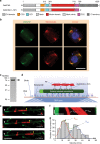
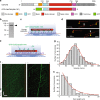
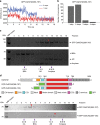
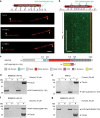
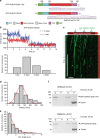
Similar articles
-
The Central Stalk Determines the Motility of Mitotic Kinesin-14 Homodimers.Curr Biol. 2018 Jul 23;28(14):2302-2308.e3. doi: 10.1016/j.cub.2018.05.026. Epub 2018 Jul 12. Curr Biol. 2018. PMID: 30017487
-
Multiple kinesin-14 family members drive microtubule minus end-directed transport in plant cells.J Cell Biol. 2017 Jun 5;216(6):1705-1714. doi: 10.1083/jcb.201610065. Epub 2017 Apr 25. J Cell Biol. 2017. PMID: 28442535 Free PMC article.
-
Reconstitution of dynein transport to the microtubule plus end by kinesin.Elife. 2014 Jun 10;3:e02641. doi: 10.7554/eLife.02641. Elife. 2014. PMID: 24916158 Free PMC article.
-
Functional diversification of the kinesin-14 family in land plants.FEBS Lett. 2018 Jun;592(12):1918-1928. doi: 10.1002/1873-3468.13094. Epub 2018 Jun 1. FEBS Lett. 2018. PMID: 29754414 Review.
-
Molecular motors: strategies to get along.Curr Biol. 2004 Nov 23;14(22):R971-82. doi: 10.1016/j.cub.2004.10.046. Curr Biol. 2004. PMID: 15556858 Review.
Cited by
-
StructureMan: A Structure Manipulation Tool to Study Large Scale Biomolecular Interactions.Front Mol Biosci. 2021 Jan 11;7:627087. doi: 10.3389/fmolb.2020.627087. eCollection 2020. Front Mol Biosci. 2021. PMID: 33505991 Free PMC article.
-
Cytoplasmic dynein1 intermediate-chain2 regulates cellular trafficking and physiopathological development in Magnaporthe oryzae.iScience. 2023 Feb 10;26(2):106050. doi: 10.1016/j.isci.2023.106050. eCollection 2023 Feb 17. iScience. 2023. PMID: 36866040 Free PMC article.
-
The Tail of Kinesin-14a in Giardia Is a Dual Regulator of Motility.Curr Biol. 2020 Sep 21;30(18):3664-3671.e4. doi: 10.1016/j.cub.2020.06.090. Epub 2020 Jul 30. Curr Biol. 2020. PMID: 32735815 Free PMC article.
-
The Orphan Kinesin PAKRP2 Achieves Processive Motility via a Noncanonical Stepping Mechanism.Biophys J. 2019 Apr 2;116(7):1270-1281. doi: 10.1016/j.bpj.2019.02.019. Epub 2019 Feb 28. Biophys J. 2019. PMID: 30902363 Free PMC article.
-
A minus-end directed kinesin motor directs gravitropism in Physcomitrella patens.Nat Commun. 2021 Jul 22;12(1):4470. doi: 10.1038/s41467-021-24546-2. Nat Commun. 2021. PMID: 34294690 Free PMC article.
References
Publication types
MeSH terms
Substances
LinkOut - more resources
Full Text Sources
Other Literature Sources
Molecular Biology Databases

